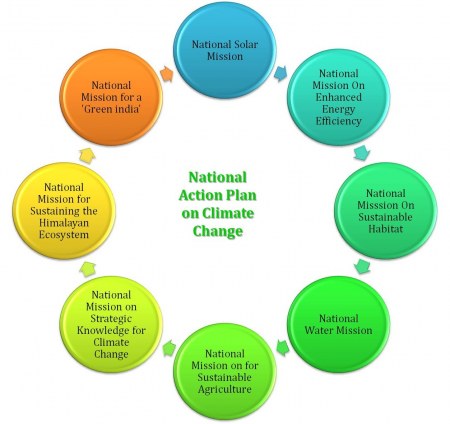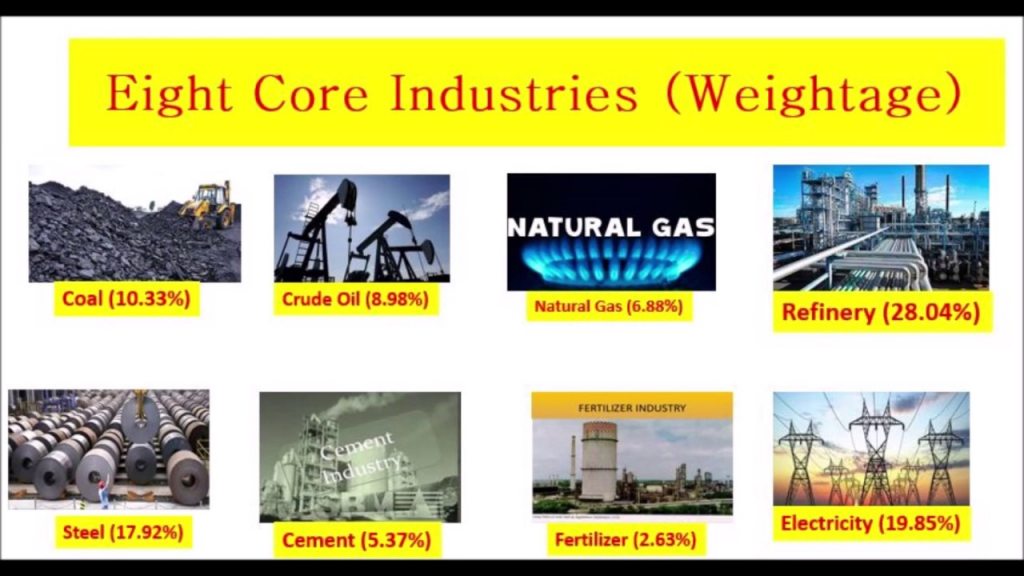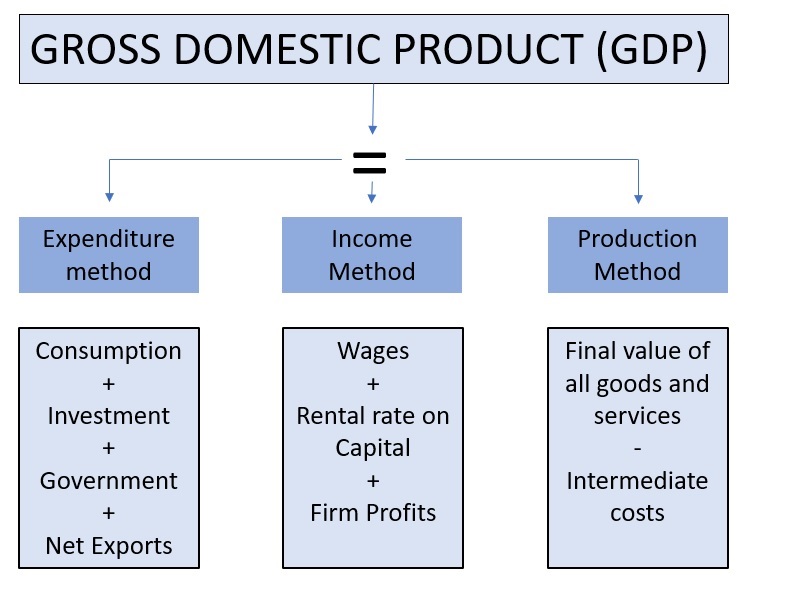Contents
- India Climate Change Knowledge Portal.
- Index of Eight Core Industries.
- Production Linked Incentive(PLI) Scheme for Bulk Drugs and PLI Scheme for Medical Devices.
- Capital Expenditure (CAPEX).
- Estimates of Gross Domestic Product (GDP).
- TRIFED.
INDIA CLIMATE CHANGE KNOWLEDGE PORTAL
Focus: GS 3; Conservation, environmental pollution and degradation, environmental impact assessment.
Why in News?
Ministry of Environment, Forest and Climate Change, Shri Prakash Javadekar today launched the “India Climate Change Knowledge Portal”.
About India Climate Change Knowledge Portal
- The India is a Party to the United Nations Framework Convention on Climate Change (UNFCCC), Paris Agreement and Kyoto Protocol.
- The Ministry of Environment, Forest and Climate Change (MoEF&CC) is the nodal Ministry for coordinating country’s response to climate change in line with national policies and UNFCCC.
- The recently launched India Climate Change Knowledge Portal captures sector-wise adaptation and mitigation actions that are being taken by the various line Ministries in one place including updated information on their implementation.
- The knowledge portal will help in disseminating knowledge among citizens about all the major steps Government is taking at both national and international levels to address climate change issues.

- The Eight major components included in the knowledge portal are as follows and below also shown in the image about the same:
- India’s Climate Profile
- National Policy Framework
- India’s NDC goals
- Adaptation Actions
- Mitigation Actions
- Bilateral and Multilateral Cooperation
- International Climate Negotiations
- Reports & Publications

Please click on this link and explore more about The India Climate Change Knowledge Portal.
Please click on this link and Refer detailed Explanation about Paris Agreement.
Extra Info
About National Action Plan on Climate Change (NAPCC)
- The India has been addressing climate change as one of the key national priorities.
- The India launched its National Action Plan on Climate Change (NAPCC) in 2008 with eight National Missions.
- The eight missions under the NAPCC include the national solar mission, national mission for enhanced energy efficiency, national mission on sustainable habitat, national water mission, national mission for sustaining the Himalayan ecosystem, national mission for a green India, national mission for sustainable agriculture, and national mission on strategic knowledge for climate change, as shown in the below attached image.

- All these missions are being implemented by the respective Ministries and Departments and are being coordinated by MoEFCC.
- Now in the post 2020 period, in view of the emerging climate change reality, the focus is on enhancing activities under the National Missions with respect to adaptation, mitigation and capacity building and undertake additional interventions like launch of new Missions such as on Health and Coastal areas.
- A slew of measures has been undertaken by the government to drive domestic action on climate change including constitution of the Prime Minister’s Council on Climate Change (PMCCC) for constant review of all National Missions.
- An Executive Council on Climate Change (ECCC) has also been set to support PMCCC. In addition, MoEFCC has set-up a National Steering Committee for Climate Change.
INDEX OF EIGHT CORE INDUSTRIES
Focus: GS 3; Indian Economy and issues relating to planning, mobilization, of resources, growth, development and employment.
Why in News?
The Office of Economic Adviser, Department for Promotion of Industry and Internal Trade is releasing Index of Eight Core Industries for the Month of October, 2020.
About Index of Eight Core Industries
- The Eight Core Industries comprise nearly 40.27% of the weight of items included in the Index of Industrial Production (IIP), these are Electricity , steel, refinery products, crude oil, coal, cement, natural gas and fertilizers, as shown in the below image based on the respective weightage.

Please click on this link and Refer detailed Explanation of Index of Eight Core Industries.
PRODUCTION LINKED INCENTIVE (PLI) SCHEME FOR BULK DRUGS AND PLI SCHEME FOR MEDICAL DEVICES
Focus: GS 2; Issues relating to development and management of Social Sector/Services relating to Health, Education, Human Resources.
Why in News?
Production Linked Incentive(PLI) Scheme for Bulk Drugs and PLI Scheme for Medical Devices have shown a very encouraging response from the pharmaceutical as well as the medical device industry.
About Production Linked Incentive Scheme (PLI)
- The Production Linked Incentive (PLI) Scheme for promotion of domestic manufacturing of critical Key Starting Materials (KSMs)/ Drug Intermediates and Active Pharmaceutical Ingredients (APIs) In India and Scheme for Promotion of Bulk Drug Parks.

Please click on this link and Refer detailed Explanation of Production Linked Incentive (PLI) Scheme.
CAPITAL EXPENDITURE (CAPEX)
Focus: GS 3;Indian Economy and issues relating to planning, mobilization, of resources, growth, development and employment.
Why in News?
Finance Minister Smt. Nirmala Sitharaman holds 5th review meeting on CAPEX of CPSEs to boost expenditure in economy
About CAPEX
- The Union Budget is broadly divided into two parts Revenue account and Capital account, these two are further divided into Receipts and Expenditure, as shown in the below attached image.

- The first category is called capital expenditure, and the second is revenue expenditure.
- For example, the capital account is divided into capital receipts and capital expenditure. Similarly, the revenue account is divided into revenue receipts and revenue expenditure.
- The Union government defines capital expenditure as the money spent on the acquisition of assets like land, buildings, machinery, equipment, as well as investment in shares.
- The examples of Capital expenditure is the part of the government spending that goes into the creation of assets like schools, colleges, hospitals, roads, bridges, etc.
- The expenditure incurred by the government is broadly divided into two parts – that which results in creation or acquisition of assets, and the other that is used for operational expenses and liabilities and does not create any kind of assets.
About Importance of Capital Expenditure
- The high capital expenditure usually means more investment by the government towards the creation of infrastructure and other assets that are crucial for rapid economic growth.
- The Capital expenditure means construction of roads, highways, dams, bridges, ports, airports and railway lines.
- The India experienced low growth rates for decades as it failed to develop physical and social infrastructure, the key to achieving high economic growth.
About Capital expenditure versus Revenue expenditure
- In India, both the Union government and state governments have often been criticized for spending too little on creating assets.
- For example, 85-90% of the Union government’s spending goes into the revenue account.
- Th high revenue expenditure of the Union government has often been blamed for low economic growth.
ESTIMATES OF GROSS DOMESTIC PRODUCT (GDP)
Focus: GS 3;Indian Economy and issues relating to planning, mobilization, of resources, growth, development and employment.
Why in News?
Estimates of Gross Domestic Product (GDP) for the Second Quarter (July-September) of 2020-21
About GDP and Different types of Ways to Calculate it
- The GDP is the final value of the goods and services produced within the geographic boundaries of a country during a specified period of time, normally a year.
- The GDP growth rate is an important indicator of the economic performance of a country.
- In January 2015, the government moved to a new base year of 2011-12 from the earlier the base year of 2004-05 for national accounts, the base year of national accounts had been revised earlier in January 2010.
- In India, contributions to GDP are mainly divided into 3 broad sectors – agriculture and allied services, industry and service sector.
- The GDP at market prices = GDP at factor cost + Indirect Taxes – Subsidies
- The GDP data in India is released by Central Statistics Offices (CSO) under Ministry of Programme and Implementation (MOSPI).
- The government has approved the merger of National Sample Survey Office (NSSO) with the Central Statistics Office (CSO) under the Ministry of Statistics and Programme Implementation (MoSPI).
- The proposed National Statistical Office (NSO) would be headed by MoSPI secretary.
- The below image shows the GDP, NDP, GNP and NNP calculations.

About GDP Calculations which doesn’t cover the following parameters
- The underground Economy refers to economic transactions that are deemed illegal, either because the goods or services traded are unlawful in nature, or because transactions fail to comply with governmental reporting requirements.
- The non-Marketed Activities (Mom cooking food for home)
- The Barter Exchanges (Rice given for oranges)
- The Negative Externality (Acid rain)
- The Opportunity cost lost (kids not going to school which could have made difference in future Human Development (HDI)
- The Income Inequality (Gini Coefficient)
- The below image shows the 3 methods to calculate the GDP.

TRIFED
Focus: GS 3; Major crops-cropping patterns in various parts of the country, – different types of irrigation and irrigation systems storage, transport and marketing of agricultural produce and issues and related constraints; e-technology in the aid of farmers.
Why in News?
TRIFED of m/o tribal affairs and state of Goa to implement ‘Goa tribal plan’
Please click on this link and Refer detailed Explanation of TRIFED.



